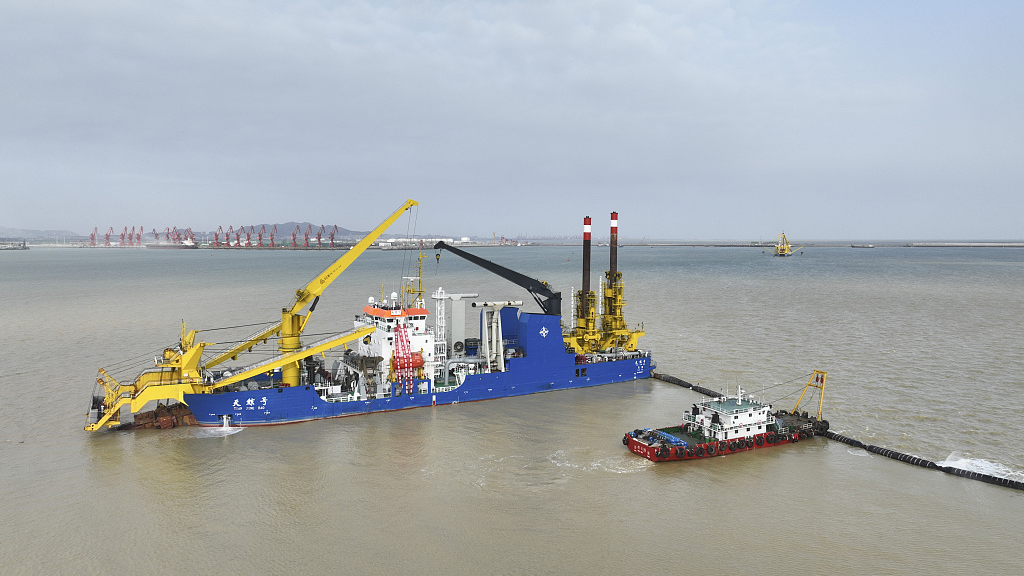BEIJING: The country was home to over 1.9 million registered sailors by the end of 2022, 1 million of whom were river ship sailors, and 900,000 were mariners, according to data from the Ministry of Transport.
As the country’s shipping trade increases, so does its seamanship.
China is scheduled to launch a series of activities spread over a week in mid-July to celebrate the day. Follow CGTN to unlock details about China’s technological progress in the sea.
China built its first self-propelled cutter suction dredger, Tianjing, or Sky Whale in English in 2010. It can excavate 4,500 cubic meters of seabed mixtures per hour over a distance of up to 6,000 meters.
The dredger is equipped with an excavation system with a 4,200 kilowatts reamer to avoid damage from coral reefs.
There are three iconic pieces of technology on the dredger.
The first is a heavy-duty reamer head. Driven by a 4,200 kilowatts variable frequency motor, it has a wide range of digging depths and can break up rocks on the seabed.
The second is its “arms,” the two traversing winches driven by variable frequency motors, allowing the dredger to create a fan-shaped motion with a width of 100 meters.
Its “long legs” constitute the third key item of technology. They are responsible for the positioning of the ship with an effective travel range of 6 meters.
In addition to excellent hardware facilities, its builder said the dredger has a smart “brain.” It is equipped with an advanced integrated automatic dredging control system, making sure the vessel can function efficiently and safely.
China has also developed an upgraded version, Tiankun. With a dredging capacity of 6,000 cubic meters per hour to a distance of 15,000 meters at most, it was put into operation in Lianyungang, east China’s Jiangsu Province in 2022.
Owned by the Dalian Maritime University in northeast China’s Liaoning Province, the Yukun vessel is China’s first ocean-going training vessel.
With a total length of 116 meters, a width of 18 meters and a gross tonnage of 6,000 tonnes, the ship can travel at speeds around 18 knots and sail 10,000 nautical miles.
Put into use in 2008, the ship was the first to be used for teaching in the country’s maritime universities.
The university’s second training vessel, Yepeng, was launched in March 2017 and set off on its maiden voyage from the port city of Dalian to South Africa a month later.
In addition, the country’s first maritime museum used for education was launched in May at the university. With a total area of over 10,000 square meters, college students can get closer to sailing by means of digital technologies such as virtual reality, augmented reality and holographic projection. –The Daily Mail-CGTN news exchange item






